Pyramiden
[78° 39.3' N 16° 20' E]
By Øystein Overrein (ed.), Jørn Henriksen, Bjørn Fossli Johansen, Kristin Prestvold
The Russian mining settlement of Pyramiden was discontinued and abandoned in 1998. Since then time has virtually been standing still here. With its wide streets and planned town-structure the place is a witness to the Soviet presence on the islands in the 1970s and 1980s. Everything here was designed with effectiveness and with mining in mind, but also with the intention of taking care of the workers’ welfare and family life. In contrast to the male dominated Longyearbyen, a community of families was characteristic for the Russian settlements.
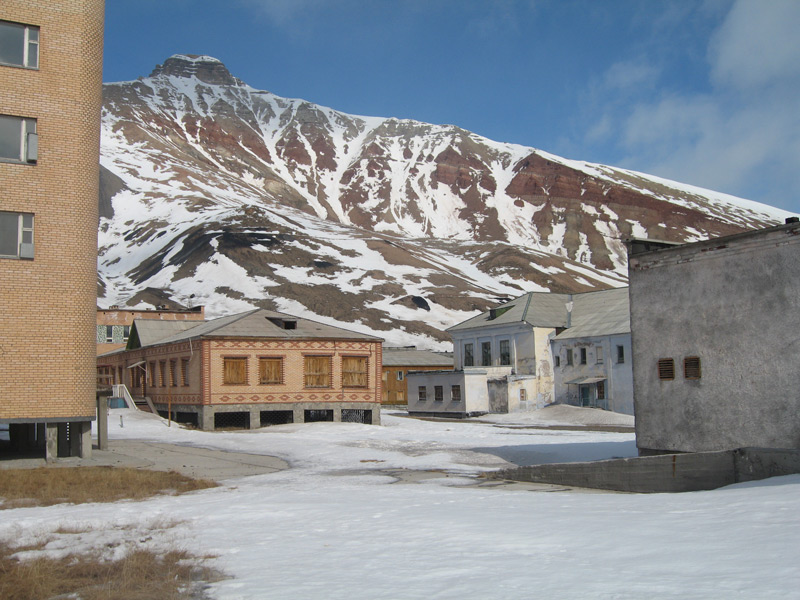 From Pyramiden, showing the pyramid shaped mountain the name is derived from. (Image: Eirik Berger)
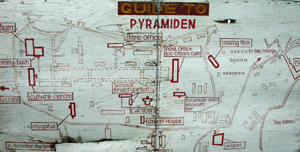 You find this street map several places in the city. It tells about an active community in the past. (Image: Jørn Henriksen) You find this street map several places in the city. It tells about an active community in the past. (Image: Jørn Henriksen)
 Urban Soviet architecture. This is the view Lenin has from his pedestal in front of the culture house. (Image: Jørn Henriksen) Urban Soviet architecture. This is the view Lenin has from his pedestal in front of the culture house. (Image: Jørn Henriksen)
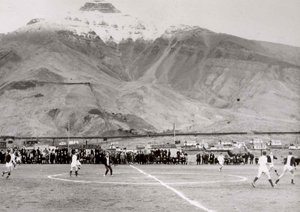 Friendship match between Longyearbyen and Pyramiden. (Image: Svalbard Museum's Photo Library) Friendship match between Longyearbyen and Pyramiden. (Image: Svalbard Museum's Photo Library)
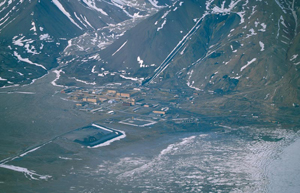 Pyramiden in Mimerbukta. (Image: Magnus Andersen / The Norwegian Polar Institute) Pyramiden in Mimerbukta. (Image: Magnus Andersen / The Norwegian Polar Institute)
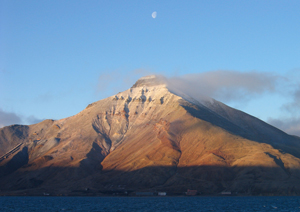 The Kheops of Svalbard. Left in the picture you see the mine entrance. (Image: Kristin Prestvold / The Governor of Svalbard) The Kheops of Svalbard. Left in the picture you see the mine entrance. (Image: Kristin Prestvold / The Governor of Svalbard)
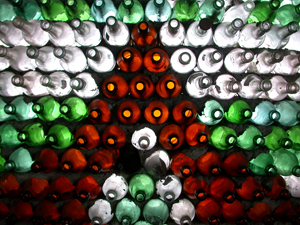 Detail from Bottle House. (Image: Jørn Henriksen) Detail from Bottle House. (Image: Jørn Henriksen)
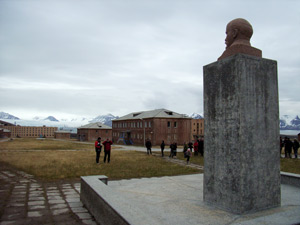 Lenin overlooking the outcome of Soviet urban planning - and visiting tourists. (Image: Bjørn Fossli Johansn / The Norwegian Polar Institute) Lenin overlooking the outcome of Soviet urban planning - and visiting tourists. (Image: Bjørn Fossli Johansn / The Norwegian Polar Institute)
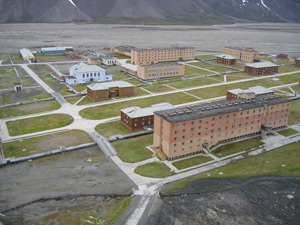 Parts of Pyramiden from an arial view. (Image: Bjarne Otnes / Governor of Svalbard) Parts of Pyramiden from an arial view. (Image: Bjarne Otnes / Governor of Svalbard)
Pyramiden is situated in Billefjorden and the name is derived from the pyramid shaped mountain close by. Exploration of the coal deposits here started in the summer of 1910 with a Swedish expedition. The experimental operation soon showed to be promising as the coal seam was discovered in several places along the south face of the mountain. The area was annexed by the Swedes and a few prospects were opened. The geologic conditions in Pyramiden proved to be difficult. After a few years of prospecting the Swedes decided to concentrate their efforts on Svea.
In 1927 the Swedes sold Pyramiden to the Russian mining company Russkij Grumant. In the beginning of the 1930s it was sold again – then to Trust Arktikugol. This company started constructing prior to World War II, but the scale of operation was small. In reality this was just trial operation. Like the other settlements in Svalbard, Pyramiden was evacuated in 1941. Living quarters, saunas, mess building, technical installations, docks, transport systems for the coal and shafts were left behind.
Pyramiden was the last plant to become operational after the war. A proper survey of the deposits in the mountain was carried out in 1947 and regular operations were started in 1948. Pyramiden was rebuilt with great effectiveness and ardour.
The social ambitions of the Soviet system are reflected in Pyramiden with its swimming hall, culture centre and costly interior and exterior architecture. The Soviet philosophy was based on loyalty and collectivism. By chance this fitted well in with the Arctic spirit that also emphasizes fellowship.
Pyramiden was considered a good place to be. Through the 1960s, 70s and 80s work in the mines of Pyramiden was very popular. The workers had a contract period of two years and the wages were decent. Employment in any of the Russian settlements in Svalbard was sought after and every job had many applicants. They could choose amongst the best workers and the requirements were tough. In the spare time sports and culture was arranged and it was a goal that as many as possible took part in these activities. At one point 90 percent of the population were active in some kind of cultural or sports activity. Many of the miners were sportsmen. The day after arrival at Pyramiden the work experience and the cultural and sports interests were registered. This way they could custom fit the spare time to make it a good place to be and everyone would contribute to the community.
Food supplies that were shipped to Pyramiden every year made it a settlement in abundance. Also, they focused on own production of milk, meat, eggs and vegetables. Fish was also on the menu. All food was free of charge from 1958. A large greenhouse was built in 1985. In the eighties the share of women and children grew. Much was done to create a good atmosphere in Pyramiden. In addition to the swimming hall and the culture centre, there was a school, a kindergarten, a library with more than 50 000 titles, cinema showings every night and a museum.
In total Pyramiden produced approximately 9 million tons of coal between 1955 and 1998. One million tons of this was consumed locally in the power plant; the rest was shipped out of Svalbard. The coal seams in Pyramiden are several metres thick, but are broken up by a number of dislocations, which makes it more costly and complicated to extract. Therefore the coal mining was discontinued in 1998 and abandoned.
Pyramiden represents a unique historical site. The settlement witnesses both mining and daily life. The wooden houses are generally from the nineteen-forties and the fifties while the brick buildings are from the seventies and later. The brick blocks and the remains of the mining installations are characteristic of Pyramiden today. The architectural and artistic qualities are clearly Soviet. It is one of the most beautiful settlements in Svalbard, not the least because of its location.
|